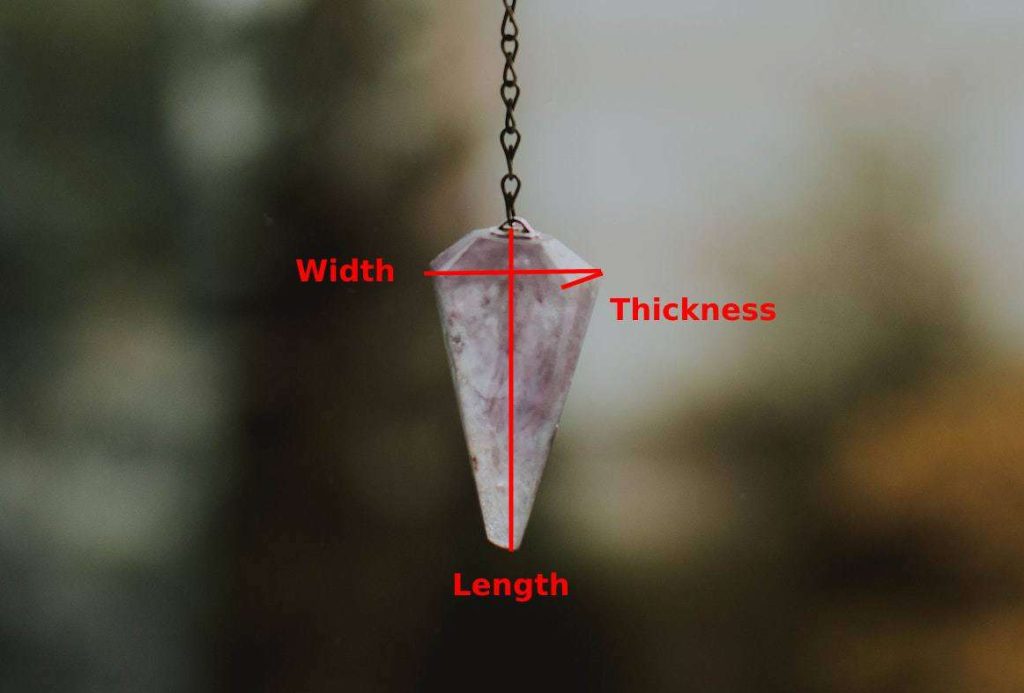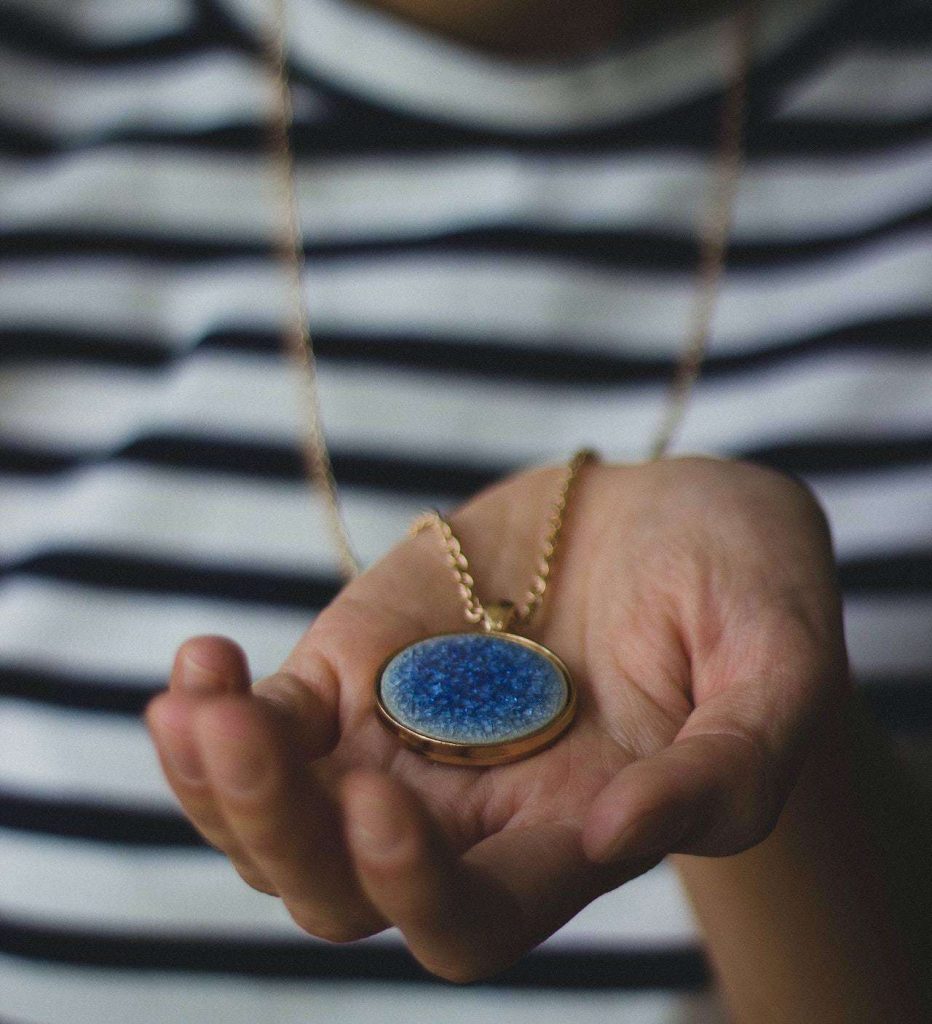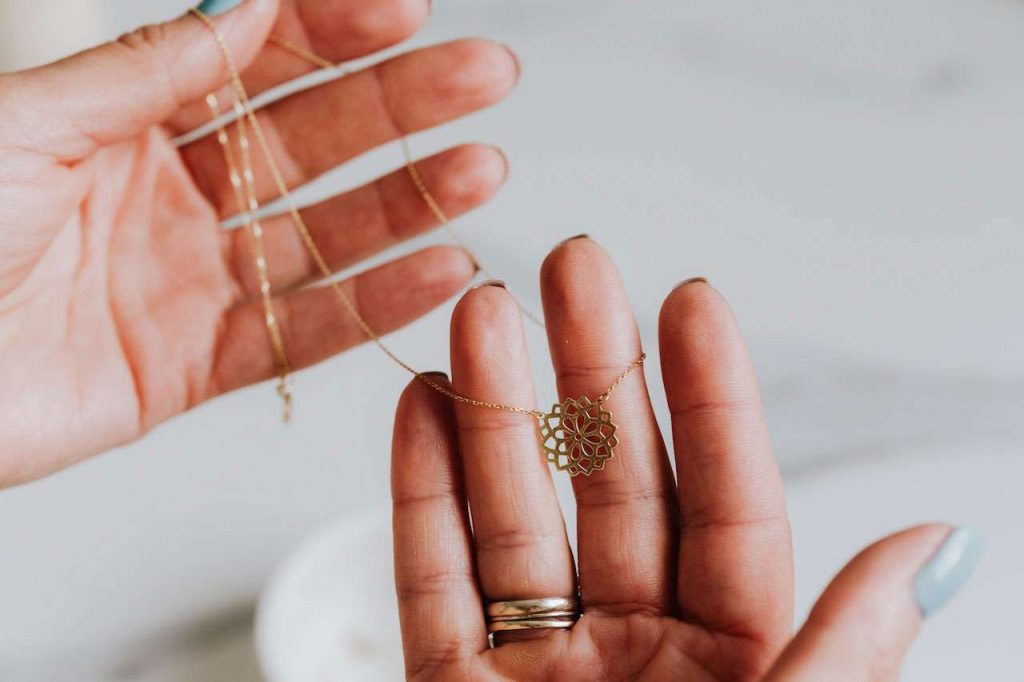Choosing the right pendant size for your necklace, bracelet or earring can greatly enhance the appearance of your jewelry. The general rule of thumb is to select a pendant that is proportional to the size of your body or clothing. For example, a larger pendant may look overwhelming on a petite person. On the other hand a smaller pendant may get lost on a larger person.
The type of pendant and design can also affect the appropriate size. A delicate and intricate pendant may look best in a smaller size to showcase the details. In contrast to a bold and chunky pendant may need a larger size to make a statement.
To determine the best pendant size for you, try on different sizes and see how they look in the mirror. Pay attention to the overall balance and proportion of the pendant with your outfit and body. In the end, it is a matter of personal preference and what makes you feel most confident and stylish.
How is pendant size measured?
Pendants are typically measured by their length, from the top of the bail (or loop) to the bottom of the pendant. The width is also sometimes included in the measurement.
In some cases, particularly with more intricate or dimensional designs, depth may also be included. It is important to consider all three dimensions when determining the size of a pendant.
Additionally, the size of the bail can impact the overall appearance and wear ability of the pendant. Therefore, this should also be taken into consideration when evaluating the measurements. Pendants can range greatly in size, from tiny charm-sized pieces to dramatic, statement pendants.
Choosing the right size for a particular design and desired look is a crucial aspect of pendant shopping and wearing. Ultimately, the measurements of a pendant should be carefully considered in order to ensure the desired aesthetic and wear ability.
It is also important to note that pendants may be described using different units of measurement. For example, inches or millimeters. Therefore, it is essential to clarify and convert as needed. With all of these factors in mind, determining the measurements of a pendant typically involves measuring the length, width, and depth or thickness.

Measure pendant length
The length is measured from the top of the bail (the loop or clasp at the top of the pendant for attaching to a necklace) to the bottom of the pendant.
Measure pendant width
The width is measured across the widest part of the design, and the depth or thickness is measured from front to back at the thickest point of the pendant.
Also good to know
Measurements may vary slightly depending on the way the pendant is positioned for measurement. So this is important to note. Additionally, some pendants may also feature embellishments such as gemstones or beads. This can affect the overall measurements of the piece. In these cases, it is important to consider not only the size and placement of the embellishments, but also how they may add weight to the pendant. This can affect wear ability and comfort when worn.
How thick should a pendant be
The thickness of a pendant largely depends on the material it is made from and the design.
For example, a thick pendant made from metal will have a different look and feel than a thin pendant made from glass or ceramic.
Generally, pendants should be thick enough to be sturdy and durable. However, not so thick that they appear bulky or heavy on the wearer. A good rule of thumb is to choose a thinner chain, such as 1 mm. This is best suited for lighter pendants. Unlike a thicker chain like 1.4mm or 1.7mm may be better for heavier pendants.
However, keep in mind that a thicker chain may overpower a smaller pendant and vice versa. It’s all about finding the right balance for your desired look. It is important to consider not only appearance, but also comfort when selecting the thickness of a pendant.
In addition, pendants made from certain materials may have specific thickness requirements in order to maintain their structural integrity. For example, silver and gold pendants should typically be at least 1/20 inch (1.27 mm) thick in order to prevent warping or bending.
Ultimately, the best thickness will depend on a combination of factors including the material, design, and individual preference. Experimentation with different thicknesses may be necessary in order to find the perfect balance for the desired result.
What Is the average size of a pendant?
The average size of a pendant is typically around 1 to 2 inches (2.5 to 5 cm) in width and 3 to 4 inches (7.5 – 10 cm) in length. However, there is a wide range of sizes for pendants. They can range from a few millimeters to several centimeters in length.
The size often depends on the design and style of the pendant. Some pendants may have a larger profile due to intricate detailing or multiple components. Unlike others, they may have a more minimalist design and are smaller in size.
The size of a pendant is a personal preference and can vary greatly. However, it is important to consider the proportions of the pendant in relation to the necklace or chain. It will impact a balanced and cohesive look.
Along with size, the weight of a pendant can also vary greatly depending on the materials used in its construction. For example, a pendant made with heavy metals such as sterling silver or gold will have a heavier weight than one made with lightweight materials like glass or plastic.
As with all jewelry purchases, it is important to consider the overall look and feel of the pendant. Ultimately, the perfect pendant size is a personal preference that complements the wearer’s style and desired aesthetic.
Small size
The average size for a small pendant is approximately 1-1.5 inches (2.5 – 4 cm) in diameter. These types of pendants are often dainty and delicate, with minimal design elements. They are perfect for everyday wear and layering with other jewelry pieces.
Medium size
The average size for a medium pendant is 2-2.5 inches (5 – 6.5 cm) in diameter. These pendants have more noticeable design elements and make a statement when worn alone. They are perfect for special occasions or adding some flair to an everyday outfit.
Large size
The average size for a large pendant is 3 inches (7.5 cm) and above in diameter. These bold pendants are eye-catching statement pieces that command attention. They can be worn as a statement piece or layered with other jewelry for a dramatic look.

What Is a good size for a pendant on a necklace?
A pendant that is about 1-2 inches (2.5 – 5 cm) in size tends to be a good balance for necklaces. Any smaller and the pendant may get lost on the necklace chain, while any larger may overpower the overall look.
The size of the pendant should also be proportionate to the necklace chain. For example, a delicate and thin chain may not be able to support a large pendant. Learn more about necklace sizes in this article. Experimenting with different sizes and styles is ultimately the best way to find what works for you.
What is a good size for a pendant of a men’s necklace?
Some men prefer smaller, more subtle pendants while others prefer larger statement pieces. The important thing is that the pendant should be in proportion with the length of the necklace.
If you prefer a shorter chain, 45 cm (18 inch), choose a small charm size to 3.5 cm (1.5 inch). For a longer chain, 65-80 cm (26-32”), which hangs lower on the chest, choose a larger pendant size.
Best pendant size for your chain
When selecting a pendant for your chain, it’s important to consider the size of both the pendant and the chain. A pendant that is too small may get lost on a larger chain, while a pendant that is too big may overpower or weigh down a smaller chain.
One way to ensure the perfect match is to measure the chain and use that measurement as a guide for selecting a pendant. For example, if you have a 53cm (22 inch) chain, aim for a pendant that is roughly 1-3 inches (2.5 – 7.5 cm) in length.
Another factor to consider is the design of the pendant. Chunky, statement pieces may look better on longer chains, while dainty, delicate pendants may be better suited for shorter chains.
Overall, the most important thing is to choose a pendant and chain combination that you feel confident and comfortable wearing. Experiment with different sizes and designs to find your perfect match.

Best charm size for your bracelet
When it comes to charm bracelets, one size does not fit all. The best charm size for your bracelet will depend on a few factors, including the overall style and design of your bracelet, personal preference, and the type of charms you plan to add.
Generally, smaller charms tend to work well with delicate, dainty bracelets, while larger charms can complement chunkier, statement-making pieces. Additionally, consider the size and weight of your charms – if you plan to add a lot of heavier charms, it’s important to choose a bracelet that can support their weight.
You may also want to mix and match charm sizes for added visual interest. For example, using a mix of small and large charms can create a balanced, eye-catching look. Ultimately, there is no right or wrong answer; it all comes down to what appeals to your personal taste and stylistic vision for your bracelet. Have fun experimenting and finding the perfect charm size for you! LYou can also learn more about bracelet sizes in this article.
Do all charms fit all bracelets?
While it may seem logical that all charms can fit on any bracelet, this is not always the case. Some charms have a specific clasp or attachment method that may not be compatible with certain bracelets. It is important to check the compatibility before purchasing a charm and bracelet combination to avoid disappointment.
Some charm designs may be too large or bulky to fit comfortably on certain bracelet styles. It is best to try on the combination before making a final purchase or gifting to ensure a proper fit.
Not all charms will fit all bracelets, but there are plenty of options available to find the perfect match. The key is to do your research and be mindful of compatibility before making a decision.
Average size of a bracelet charm
The average size of a bracelet charm is approximately 6 ½ to 7 ½ inches in length and width. However, the size can vary greatly depending on the design of the charm. Some charms may be smaller, measuring only a few millimeters. Others may be larger and more ornate, reaching up to 9 or 10 inches in length and width.
It is also important to note that the size of the charm may affect the overall fit and appearance of the bracelet, so it is important to consider the size when choosing charms for your bracelet.
Inspiration: different types of pendants and charms
There are many different types of pendants and charms including cross pendants, initial charms, gemstone pendants, and symbolic charms.
Cross pendants often hold religious significance for the wearer while initial charms can represent a loved one or oneself.

Gemstone pendants often have both aesthetic value and are believed to possess healing properties.

Symbolic charms can represent various things such as luck, protection, and love.
Pendants and charms can be made of a variety of materials including gold, silver, and glass.
They can also be personalized with engravings or custom designs. Pendants and charms make for great gifts and fashion statements.

Choosing the right pendant or charm is unique to each individual and can be a fun and meaningful experience. Some other popular types of pendants and charms include those in the shape of animals or insects, key shapes, and hearts.
Pendants and charms add a personal touch to any outfit or serve as a treasured keepsake. So go ahead and explore the world of pendants and charms to find the perfect one for you!

